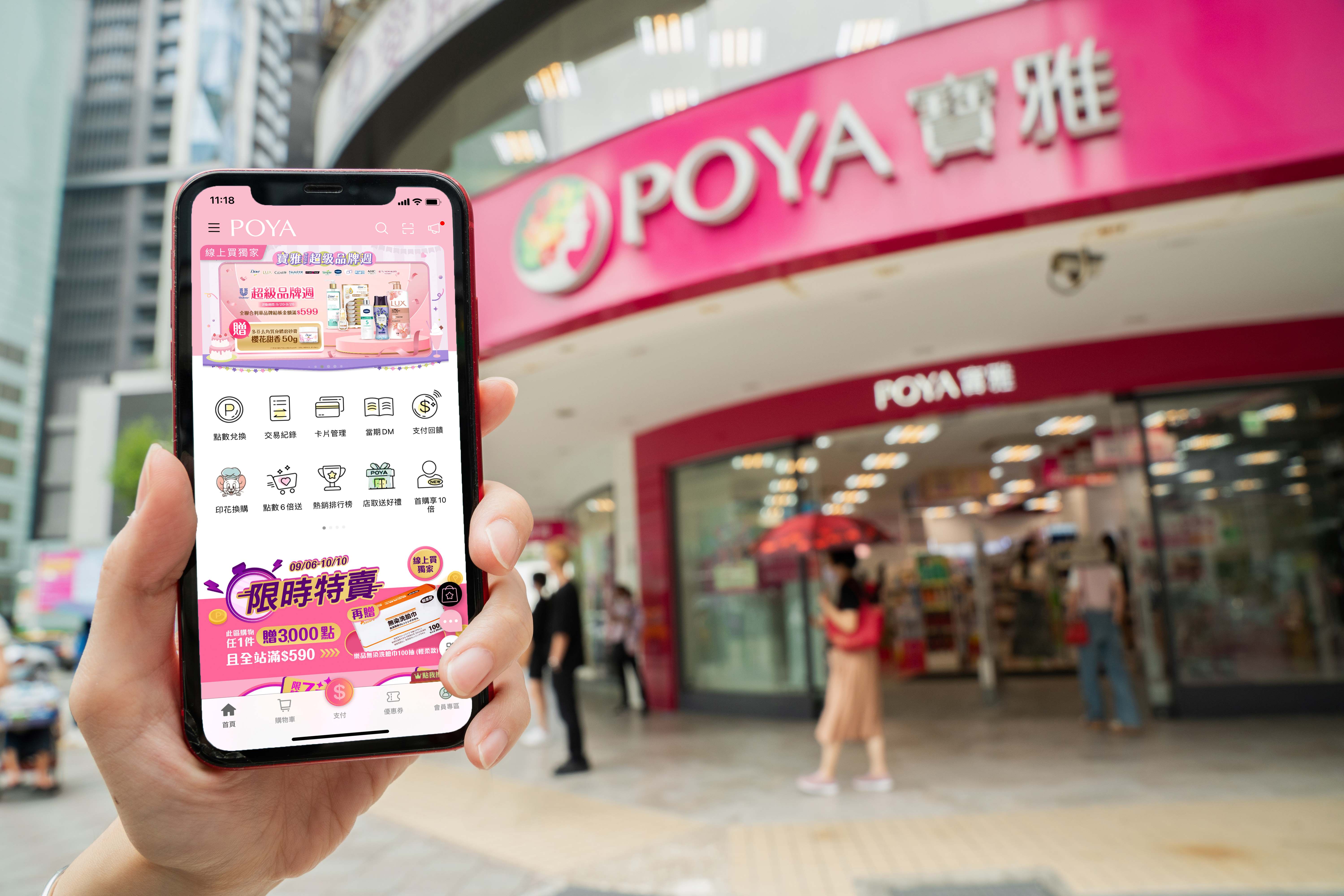Project Description

Embracing Human-Centric Fashion Values!
Adastria Accelerates Omni-channel Growth with D2C Operations
INDUSTRY Footwear, Apparel & Accessories
TYPE OMO
Featured in Business Next (Read original post)
“In Taipei’s East District, within the store of the Japanese lifestyle fashion brand niko and…, a group of young people enamored with lifestyle aesthetics are admiring the various home goods and household items. The scene shifts to a department store, where stylish young mothers shop for summer outfits for the entire family at the GLOBAL WORK counter.
“For Adastria, the core belief across all its brands is ‘Play fashion.’ We bring joy and self-expression to life and work by embracing fashion and styling!” Adastria Taiwan’s Representative Director, President Yvonne Lin, confidently shares this vision with us.
Two Decades of Steady Operation,
11 Brands, and the Most Profitable Overseas Market for the Group
Adastria’s parent group, listed on the Tokyo Stock Exchange, encompasses around forty brands. Twenty years ago, the group decided to introduce the famous women’s clothing brand LOWRYS FARM in Taiwan, marking its first step overseas. As the group’s operations stabilized, Adastria gradually established a more comprehensive Japanese fashion presence in Taiwan, spanning from basic men’s, women’s, and children’s clothing to fashion accessories, home goods, lifestyle items, and cultural trinkets, fully catering to the local consumers’ needs for clothing, food, housing, and transportation.
Today, Adastria has 11 brands, 53 physical stores in Taiwan (as of 2023/05/31), and an EC Taiwan official website. Besides the continuous growth in physical store sales, Adastria also gathers its brands on Taiwan’s official website, “.st Taiwan,” achieving remarkable results. From 2019 to 2021, the website and app sales doubled from 7% to 17% of the total company sales.
Building Self-Operated Digital Channels to Enhance Brand Power with D2C Operations
The establishment of Adastria Taiwan’s official website, “.st Taiwan,” reflects the various fluctuations in Taiwan’s apparel industry over the past two decades.
Yvonne Lin explains that the rise of fast fashion brands, trendy select shops, and Japanese and Korean purchasing agents has compelled fashion brands to grasp the needs and preferences of the young consumer base to remain memorable. Initially, she listed the brands on general e-commerce platforms. However, this could not fulfill Adastria’s three long-term digital development goals: increasing brand awareness, enhancing member loyalty, and gaining insights into cross-channel consumer needs through data.
“I want customers to know that the products they buy come from Adastria, a company willing to establish a long-term, two-way recognition and service relationship with consumers, rather than focusing solely on one-time transactions,” Lin mentions. Adastria Taiwan started collaborating with 91APP in 2018, building the Taiwan official website, “.st Taiwan,” with the group’s full brand operation model, and successively introducing 11 brands to develop Taiwan’s e-commerce sales channels fully.
Notably, Lin foresaw the mobile shopping trend early on and insisted on creating a brand app that was in sync with the website. Strengthening customer engagement through the app has brought high returns, with a conversion rate nearly three times that of the website.

Adastria uses the brand app developed with the assistance of 91APP to enhance customer engagement and increase member loyalty.
Store Staff as Brand Ambassadors,
Styling to Exert Cross-Channel Influence
How do you declare the brand’s fashion attitude? Lin unhesitatingly answers: “Store staff styling.”
She explains that store staff have unique insights into styling. When they wear the products, they become the best brand ambassadors, often playing a crucial role in customers’ purchasing decisions. Thus, she suggested that the 91APP team extend this human influence online, creating a “Staff Board” section to digitally showcase the daily styling of store staff as a reference for non-physical channel consumers.
Why did Adastria decide to feature store staff as the styling protagonists? Lin reveals: “Store staff and consumers have similar lifestyles and images, making their styling photos highly relatable and valuable to consumers.” She adds that store staff styling is like a friend’s warm and genuine advice, enhancing consumers’ purchasing motivation. Consumers in Japan have trusted and welcomed this human-to-human influence for years.
The fashionable styling of store staff featured on the Staff Board boosts online sales and brings website members back to physical stores. Many customers come to the counter with pictures on their phones, requesting to try on items showcased on the Staff Board, creating cross-channel flow, which is one of Adastria’s OMO (Online-Merge-Offline) strategies.
What if consumers only look without buying? Lin is not worried at all because “store staff styling has reference value for consumers, inherently strengthening brand power.”
Integrating Group Resources to Enhance Overall Customer Loyalty
In the past, each brand under Adastria developed independently, akin to brothers climbing a mountain with their efforts, making it hard to transfer loyalty to other brands. To amplify the group’s resource advantages and enhance overall customer loyalty, Adastria Taiwan introduced a group-based customer relationship management system (CRM) a year after the website was established.
“For consumers, the biggest attraction is accumulating and using points across brands within the group!” Yvonne Lin says. As circulation increases and the number of exchange consumption venues grows, the value of these “points” rises, making it easier to cultivate loyal consumers. Adastria’s Taiwan website functions like a large, composite brand flagship store online, allowing consumers who favor individual brands to prioritize other group brands for different occasions.
The results show that the cross-brand, omni-channel accumulation of points significantly appeals to members. According to Adastria’s data, the proportion of bonus points redeemed in 2022 was about 45% to 60%. Additionally, the team targets “sleeping customers” who haven’t shopped online for a while with app push notifications and discount messages, prompting many members to shop online and visit counters to try on items, creating more cross-channel OMO members and boosting group-wide omni-channel sales.
Observing Adastria’s sales data reveals that the per capita contribution of OMO members is 1.9 times that of pure store customers and 2.3 times that of pure e-commerce customers, indicating that continuously accumulating member data and communicating digitally can convert potential customers into high-value, high-loyalty cross-channel consumption members.

Adastria’s Representative Director, President Yvonne Lin, stated that allowing members to share points across all brands within the group can enhance brand loyalty.
Data-Driven Precision Enhances Market Insight
Another advantage of promoting the digital development of brands is the ability to enhance market insights through data. International brands often face challenges adapting to local markets, making a big splash but achieving little success. As the overseas branch of a Japanese group, it is essential to deeply understand the local culture to balance the parent company’s expectations with the local market’s reality. As Adastria’s coordinator in Taiwan, Yvonne Lin believes that “data speaks.”
“We already have our own strategic indicators, and with 91APP’s data database, we can make more precise decisions.” She illustrates this with an example: initially, the headquarters intended to simultaneously open niko and… stores in Taiwan and Hong Kong during the first wave of overseas expansion. However, she believed the Taiwanese market was not mature enough then and didn’t need to rush for the “first overseas store” title. When the trend of Japanese youth culture surged across Taiwan in 2017, she introduced Niko and…, successfully riding the wave of Japanese youth culture.
She points to her black HARE dress and explains that HARE is a unisex brand offering men’s and women’s clothing in Taiwan. The decision to introduce this brand was based on data showing that Taiwan’s men’s fashion market was a blue ocean—high demand but low supply. Therefore, Adastria introduced the Japanese fashion brand HARE in 2021, providing Taiwanese male consumers with a new fashion trend guide. Adastria initially sold HARE clothing on the website, dynamically adjusting the product range and inventory based on actual transaction data, which served as a basis for setting up physical stores.
“This year, Adastria plans to expand with 21 new physical stores. Apart from the strong post-pandemic recovery of department stores, integrating online and offline channels has helped us quickly grasp consumer needs,” Lin states. Using data to meet consumer needs aims to make them remember the Adastria group name while enjoying fashion.

Adastria introduces diverse brands to meet Taiwanese consumers’ fashion and lifestyle needs.
Combining Human Warmth and Technology to Create Unforgettable Brand Value
With more companies investing in e-commerce and developing new technologies, will physical stores be replaced? Yvonne Lin doesn’t think so. She believes that since people wear clothes, the demand for human warmth will always exist. However, companies must also consider how to combine warm services with technology.
In the future, Adastria will continue to gain market insights and adjust group strategies through data analysis, introducing more fashion brands to Taiwan and creating a diverse fashion atmosphere. Resources will also be allocated to optimize the Staff Board, incorporating more localized styling from Taiwanese store staff to meet local consumer needs.
Fashion has no standard answers, so only brands that meet consumer needs can stand firm in the rapidly changing trends and not be forgotten. Whether online or in physical stores, enabling more people to “Play fashion” has been Adastria’s unwavering mission in Taiwan for the past twenty years.





